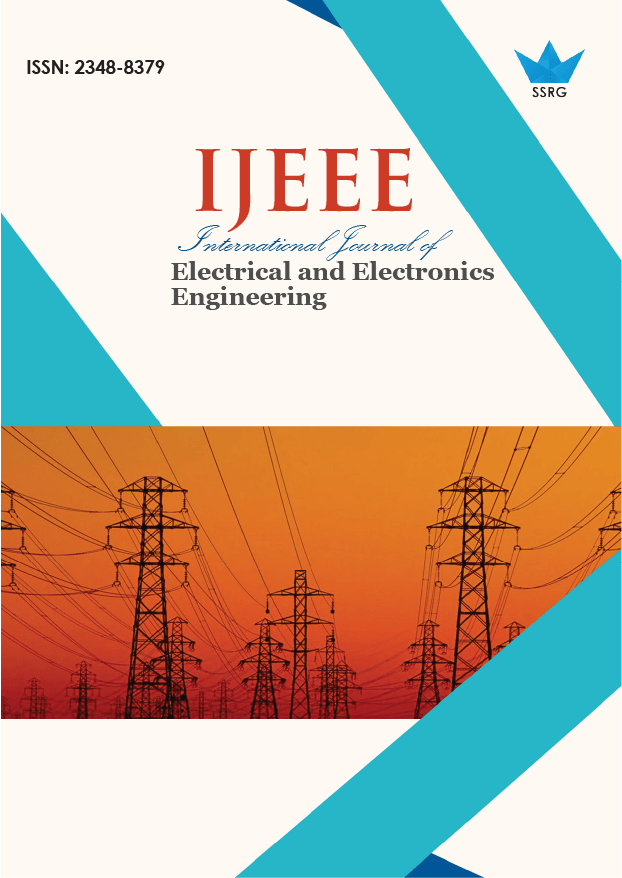Automated Diagnosis to Predict the Thyroid Using Machine Learning Algorithms

| International Journal of Electrical and Electronics Engineering |
| © 2024 by SSRG - IJEEE Journal |
| Volume 11 Issue 12 |
| Year of Publication : 2024 |
| Authors : Meenakshi Thalor, Mrunal Pathak, Vandana Kale, Veena Bhende |
How to Cite?
Meenakshi Thalor, Mrunal Pathak, Vandana Kale, Veena Bhende, "Automated Diagnosis to Predict the Thyroid Using Machine Learning Algorithms," SSRG International Journal of Electrical and Electronics Engineering, vol. 11, no. 12, pp. 308-313, 2024. Crossref, https://doi.org/10.14445/23488379/IJEEE-V11I12P129
Abstract:
Thyroid disorders affect millions worldwide, necessitating early and accurate diagnosis to ensure effective management and treatment. In this context, the Thyroid Stage Prediction App represents a groundbreaking healthcare innovation. This mobile application leverages cutting-edge machine learning technologies to accurately predict thyroid stage progression, offering a proactive approach to thyroid disease management. The Thyroid Stage Estimator app features an intuitive interface that lets users access their medical history, test results, and related symptoms easily. The app then processes this information using algorithms to measure current thyroid levels and predict future growth. This predictive model is based on a large database of non-patient information and is continually updated to ensure reliability and accuracy. Key features of the app include stage estimation, personalized recommendations, reminders to consult with doctors, and encouragement of early intervention and treatment plans. The app also provides important information about thyroid health and wellness, allowing users to make informed decisions about their health.
Keywords:
Logistic regression, Machine Learning, Random forest, Support Vector Machine, Thyroid.
References:
[1] Tahir Alyas et al., “Empirical Method for Thyroid Disease Classification Using a Machine Learning Approach,” BioMed Research International, 2022.
[CrossRef] [Google Scholar] [Publisher Link]
[2] Giuseppe Mollica et al., “Classification of Thyroid Diseases Using Machine Learning and Bayesian Graph Algorithms,” IFAC PapersOnLine, vol. 55, no. 40, pp. 67-72, 2022.
[CrossRef] [Google Scholar] [Publisher Link]
[3] Ritesh Jhal, Vandana Bhattacharjee, and Abhijit Mustafi, “Increasing the Prediction Accuracy for Thyroid Disease: A Step towards Better Health for Society,” vol. 122, no. 2, pp. 1921-1938, 2021.
[CrossRef] [Google Scholar] [Publisher Link]
[4] Song-Quan Ong, Pradeep Isawasan, and Khairulliza Ahmad Salleh, “Regression Study for Thyroid Disease Prediction: Comparison of Crossing-Over Approaches and Multivariate Analysis,” 2022 3rd International Conference on Artificial Intelligence and Data Sciences (AiDAS), IPOH, Malaysia, 2022.
[CrossRef] [Google Scholar] [Publisher Link]
[5] Md Riajuliislam, Khandakar Zahidur Rahim, and Antara Mahmud, “Prediction of Thyroid Disease (Hypothyroid) In Early Stage Using Feature Selection And Classification Techniques,” 2021 International Conference on Information and Communication Technology for Sustainable Development (ICICT4SD), Dhaka, Bangladesh, 2021.
[CrossRef] [Google Scholar] [Publisher Link]
[6] Lerina Aversano et al., “Thyroid Disease Treatment Prediction with Machine Learning Approaches,” Procedia Computer Science, vol. 192, pp. 1031-1040, 2021.
[CrossRef] [Google Scholar] [Publisher Link]
[7] Anu K.P, and J. V. Bibal Benifa, “A Comprehensive Analysis Using Neural Network-Based Model for Thyroid Disease Prediction,” 2022 International Conference on Augmented Intelligence and Sustainable Systems (ICAISS), Trichy, India, pp. 72-78, 2022.
[CrossRef] [Google Scholar] [Publisher Link]
[8] Rajasekhar Chaganti et al., “Thyroid Disease Prediction Using Selective Features and Machine Learning Techniques,” Cancers, vol. 14, no. 16, 2022.
[CrossRef] [Google Scholar] [Publisher Link]
[9] Gyanendra Chaubey et al., “Thyroid Disease Prediction Using Machine Learning Approaches,” National Academy Science Letters, vol. 44, no. 3, pp. 233-238, 2020.
[CrossRef] [Google Scholar] [Publisher Link]
[10] R. Banu, “Classification Model Using Random Forest and SVM to Predict Thyroid Disease,” International Journal of Scientific & Technology Research, vol. 9, no. 2, pp. 1680–1685, 2018.
[Google Scholar]
[11] Amulya.R. Rao, and B.S. Renuka, “A Machine Learning Approach to Predict Thyroid Disease at Early Stages of Diagnosis,” 2020 IEEE International Conference for Innovation in Technology (INOCON), Bangluru, India, 2020.
[CrossRef] [Google Scholar] [Publisher Link]
[12] A K Aswathi, and Anil Antony, “An Intelligent System for Thyroid Disease Classification and Diagnosis,” 2018 Second International Conference on Inventive Communication and Computational Technologies (ICICCT), Coimbatore, India, pp. 1261-1264, 2018.
[CrossRef] [Google Scholar] [Publisher Link]
[13] K. Shankar et al., “Optimal Feature-based Multi-Kernel SVM Approach for Thyroid Disease Classification,” The Journal of Supercomputing, vol. 76, pp. 1128-1143, 2020.
[CrossRef] [Google Scholar] [Publisher Link]
[14] Priyanka Duggal, and Shipra Shukla, “Prediction of Thyroid Disorders Using Advanced Machine Learning Techniques,” 2020 10th International Conference on Cloud Computing, Data Science & Engineering (Confluence), Noida, India, pp. 670-675, 2020.
[CrossRef] [Google Scholar] [Publisher Link]
[15] Poonam S Jadhav, and Punashri M Patil, “Machine Learning Algorithms and its Applications: A Survey,” International Journal of Technology Engineering Arts Mathematics Science, vol. 1, no. 1, pp. 28-31, 2021.
[Google Scholar] [Publisher Link]

 10.14445/23488379/IJEEE-V11I12P129
10.14445/23488379/IJEEE-V11I12P129